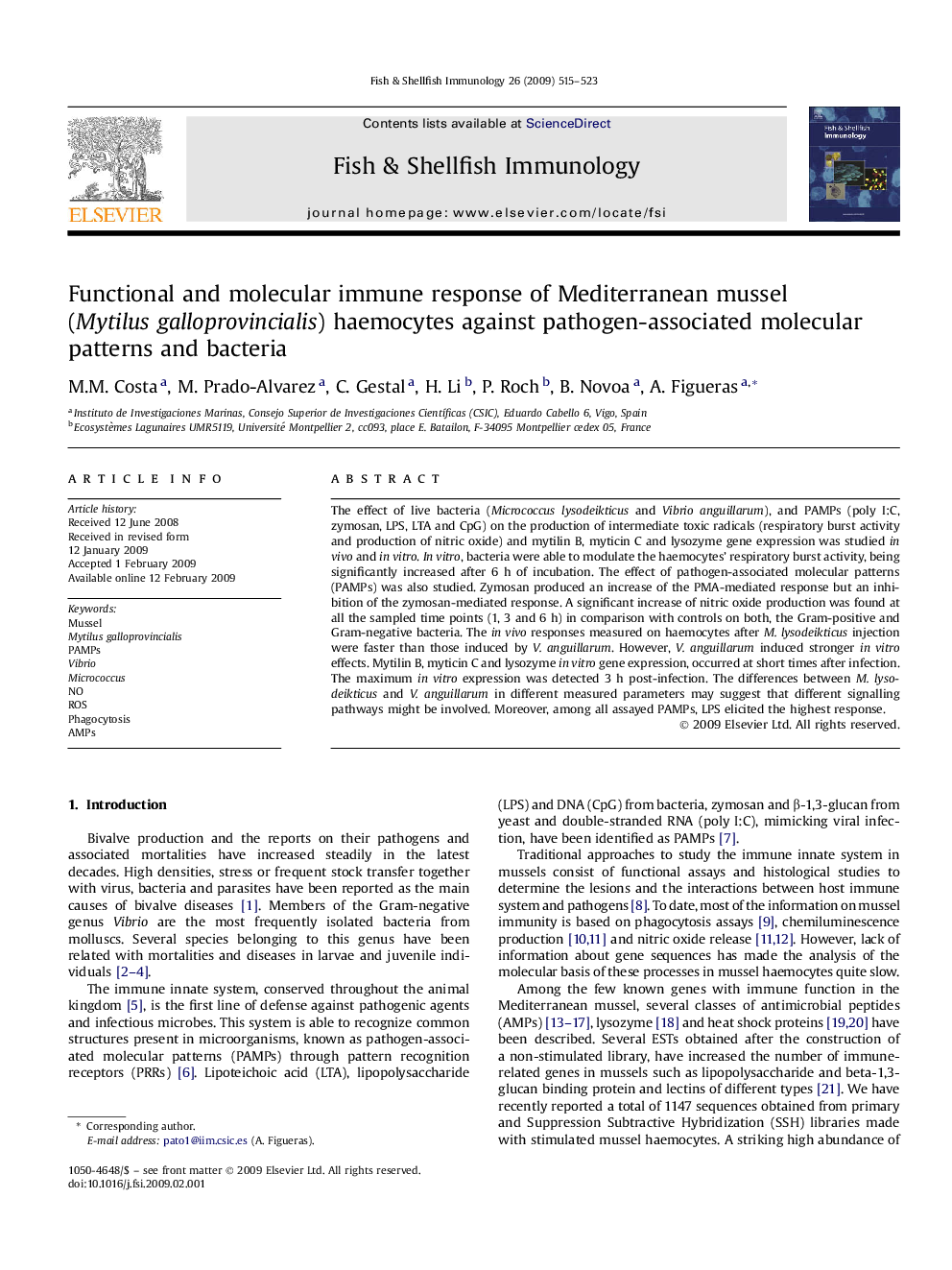| Article ID | Journal | Published Year | Pages | File Type |
|---|---|---|---|---|
| 2432980 | Fish & Shellfish Immunology | 2009 | 9 Pages |
The effect of live bacteria (Micrococcus lysodeikticus and Vibrio anguillarum), and PAMPs (poly I:C, zymosan, LPS, LTA and CpG) on the production of intermediate toxic radicals (respiratory burst activity and production of nitric oxide) and mytilin B, myticin C and lysozyme gene expression was studied in vivo and in vitro. In vitro, bacteria were able to modulate the haemocytes' respiratory burst activity, being significantly increased after 6 h of incubation. The effect of pathogen-associated molecular patterns (PAMPs) was also studied. Zymosan produced an increase of the PMA-mediated response but an inhibition of the zymosan-mediated response. A significant increase of nitric oxide production was found at all the sampled time points (1, 3 and 6 h) in comparison with controls on both, the Gram-positive and Gram-negative bacteria. The in vivo responses measured on haemocytes after M. lysodeikticus injection were faster than those induced by V. anguillarum. However, V. anguillarum induced stronger in vitro effects. Mytilin B, myticin C and lysozyme in vitro gene expression, occurred at short times after infection. The maximum in vitro expression was detected 3 h post-infection. The differences between M. lysodeikticus and V. anguillarum in different measured parameters may suggest that different signalling pathways might be involved. Moreover, among all assayed PAMPs, LPS elicited the highest response.
